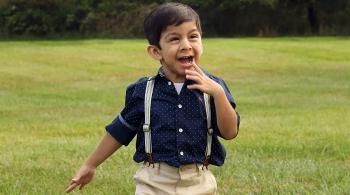Eating is an inherently enjoyable activity for most of us. We have favorite dishes, look forward to future meals, and often even plan vacations around food. Heck, the word “foodie” is now an official part of our nomenclature. In addition to being innately satisfying, however, meals are also an important part of socialization and development. We blow out the candles on our birthday cake each year, spend hours cooking elaborate dinners to share with our families over the holidays, and meet our friends at restaurants to catch up on recent events. For parents of children with feeding problems, their resistance to eating can be mind-boggling, not to mention stressful! This month, we’ll explore a variety of reasons why children may be reluctant to dig in at dinner time.
It’s important to recognize that feeding problems are complex and develop over time; thus, there is often more than one factor contributing to a child’s feeding difficulties. Previous researchers have categorized potential causes into the following groups: medical factors, behavioral/environmental factors, psychosocial factors, skill deficits, and sensory processing difficulties. Below, we’ll describe and give examples of problems in each of these areas.
Medical factors:
This category is characterized by physical problems that relate to eating. Examples include constipation, reflux, food allergies, and cardiac or respiratory problems. This can also include anatomical differences in the structures involved in eating, such as tongue or lip ties, laryngomalacia, or palate abnormalities. If you believe a medical factor may be contributing to your child’s feeding difficulties, talk to your child’s pediatrician.
Behavioral/Environmental factors:
Problems in this area often involve characteristics of the mealtime setting or routine, including rules and expectations during meals, as well as the child and caregiver’s patterns of response during meals. For example, children may eat more slowly if they are watching TV during meals, or may be upset to transition from a highly preferred activity to the dinner table. And if your child’s tantrum causes you to remove the broccoli from their plate, tantrums may become a go-to trick for avoiding certain foods. If you think behavioral/environmental factors may play a role in your mealtime woes, begin taking some notes on what happens immediately before a problem begins and how you respond to it. Recognizing a pattern is essential to breaking it.
Psychosocial factors:
Concerns in this domain often involve how we relate to one another, and they may cause challenges in areas other than eating. Examples of psychosocial factors include busy family schedules, the parent-child relationship, marital discord, and parental anxiety. If you are struggling in any of these areas and feel you may need help getting back on track, consider meeting with an individual or family therapist to identify potential areas for growth.
Skill deficits:
This category is characterized by an absence of or weakness in skills necessary for certain feeding tasks, which may make these tasks difficult or frustrating for your child to complete. For example, some children have low muscle tone in their cheeks, lips, or tongue, which may slow their chewing and cause them to “pack” bites. Similarly, some children do not have the motor coordination to scoop and self-feed bites independently with utensils. If your child seems to be falling behind their peers in tasks like chewing, cup drinking, and self-feeding, speech-language pathologists and occupational therapists may be able to help you assess and treat the problem.
Sensory processing difficulties:
Although we don’t yet understand why, some individuals are especially sensitive to certain sensory aspects of food, such as the temperature, smell, taste, or texture. Children who gag easily, resist teeth brushing, complain that food is too hot or too cold, or leave the table when strong-smelling foods are present may be exhibiting signs of heightened sensitivity. Speech-language pathologists and occupational therapists may work toward decreasing your child’s oral sensitivities. Gradually increasing your child’s exposure to these foods can also be helpful.
Meals are multifaceted activities that most of us take pleasure in, but there are many reasons why this may not be the case for your child. If eating has ever been especially challenging, uncomfortable, or unpleasant, your child may go to great lengths to avoid certain foods, or mealtime in general. It is important to establish consistent routines and expectations during meals, and to address any sources of difficulty or discomfort that may be impacting your child’s eating habits. If you are interested in working with someone to improve your child’s mealtime habits, we encourage you to consider an interdisciplinary treatment program that can assess and address the wide variety of concerns described above.
Suggested Reading:
V. Volkert and C. Piazza, “Pediatric Feeding Disorders,” Handbook of Evidence-Based Practice in Clinical Psychology, Child and Adolescent Disorders (2012): 323-337















